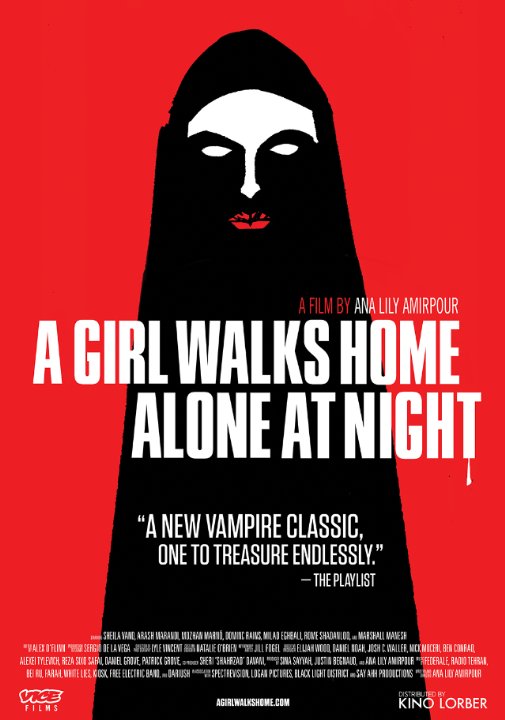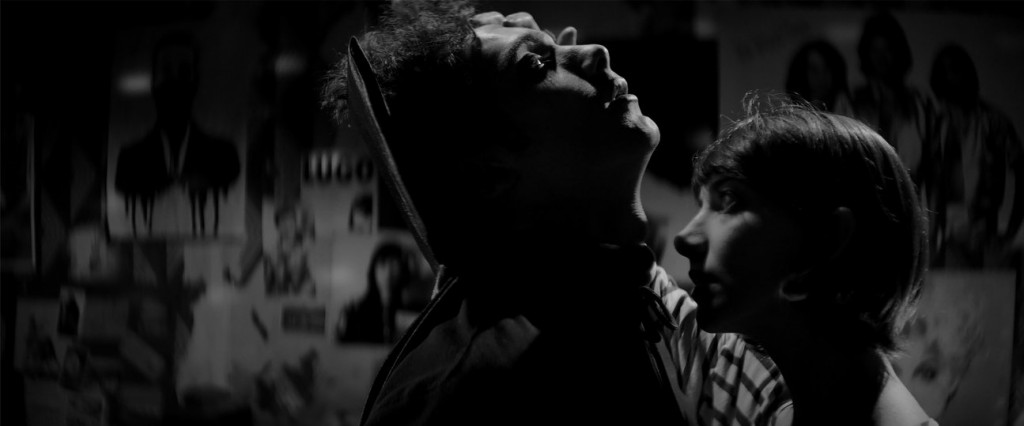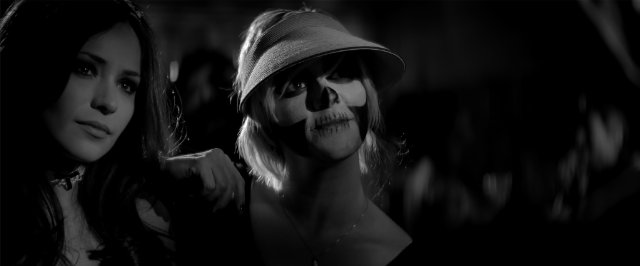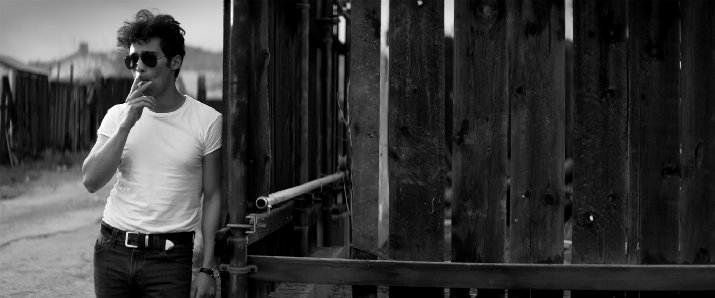Our guest blogger is hobbyist film and TV series reviewer and writer Harry Casey-Woodward:
A Girl walks home alone at night, 2015, 18, dir Ana Lily Amirpour, 3/5
I’m not a big fan of vampires movies, unless they’re done well. I dislike the way certain films and TV shows (cough cough Twilight cough) have portrayed vampires as surly, sparkling love interests. I’m more a fan of the old fashioned kill-them-first-shag-them-later variety. I also dislike the fact that vampires have been done to death. But I guess vampire films are like any other genre. Out of the majority of over-clichéd, over-sexed muck rises a few gems that dare to do things differently and show everybody else how it’s supposed to be done.
There was Swedish vampire film Let the Right One In in 2008. I liked its original premise of a young girl vampire making friends with a human boy. However I don’t know if it was the film’s sparse, sombre tone or there was something wrong with me when I tried to watch it but I just found it a bit dull. This was certainly not the case with the subject of this review.
This year’s vampire flick (now on DVD and blu-ray) is the most striking and unusual of its kind I’ve ever seen. For one thing, it’s set in Iran with dialogue faithfully in Farsi while remaining an American production. Elijah Wood is one of the executive producers and he features in the special feature interviews.
Watch these interviews and you will understand exactly how an Iranian vampire film came together. The director Ana Lily Amirpour has an Iranian background and comes across as a female version of Quentin Tarantino. She swears a lot and chatters enthusiastically about her favourite things, which include spaghetti westerns, pop music and vampires. She set out to write a screenplay that brought all these elements together. She had already shot a couple of shorts set in Iran and when she tried on a chador veil one of the extras was wearing, she knew her vampire had to be Iranian. Of course.
But she’s not just planted a vampire in Iran. She’s planted a vampire in a fictional desert town named Bad City , home to various social misfits including a prostitute, a pimp, a transvestite, an urchin, some spoilt kids, a junky and his son Arash (Arash Marandi) who dresses like James Dean and drives a hot vintage car. Even when his beloved ride gets taken as payment for his father’s drugs and he breaks his hand punching a wall in anger, he still looks cool with a cast and a bicycle.
While he’s trying to look after his father and cat, make money and keep on looking cool, the vampire simply named the Girl is prowling the streets at night, looking suitably menacing yet somehow cute in a black flowing chador as she preys on scummy men, terrorises children and steals their skateboards.
The actress Sheila Vand gives an astonishing performance. She never smiles and her lines are rare too, but she communicates so much menace and loneliness through her expressions you don’t know whether to be scared or feel sorry for her.
The sparse dialogue in this film is a merit. It’s clear that Amirpour has learnt a lot from her favourite Sergio Leone. Her movie runs on the less-is-more principle, relying on the actor’s expressions and actions to tell the story rather than dialogue. She also makes heavy use of atmosphere and suspense rather than gore in the horror scenes, which is refreshing regarding most blood-spattered horrors today. In fact for a vampire movie there is very little blood, except for one nasty scene and even then the film is in black and white.
It’s clear from the start that this is not a straightforward horror. Amirpour is more concerned with giving her audience a visual feast. She is also a big fan of David Lynch. With the film being black and white and featuring various long shots of industrial scenery, as well as being an urban nightmare populated by sad freaks, I couldn’t help being reminded of such Lynch films as Eraserhead and Blue Velvet.
However, while the film is a banquet for the eyes and ears (the soundtrack consists of Iranian and Western pop mixed with spaghetti western-style music), perhaps the film is too concentrated on style and trying to be hip. For example, amidst all the culture references the plot boils down to a love story between Arash and the vampire. It’s the film’s presentation of romance which gets on my nerves. These two very good looking people meet, are instantly attracted to each other and their lovelorn talk consists mostly of comparing life to music: ‘don’t you wish you could live in a song?’ etc. I’m sorry but this fantasy does not match my past awkward, bumbling attempts at dating and thus I believe it encourages unrealistic romantic expectations. Then again the film is just that, a fantasy.
Nevertheless as cool and fun and imaginative the film is, I couldn’t help feeling a little underwhelmed at the end. The film bends over backwards to satisfy you superficially with stunning visuals. When it comes to the plot however, I feel the film could have gone for more emotional impact with the dramatic events it depicted. It’s cool that the film opted for a less-is-more approach concerning the dialogue and emotion depicted, but there’s never any real conflict between the characters. So as dark as the film gets, it doesn’t really pack a punch. Still, it’s worth seeing for the cat Masuka’s performance alone.
This is still the coolest and most genre-busting vampire movie you will ever see and I applaud Amirpour’s unique vision and cinematic enthusiasm. I’m looking forward to her next movie The Bad Batch, a love story set in a cannibal colony in a Texas wasteland. I hope she does a western.
Images from IMDB



